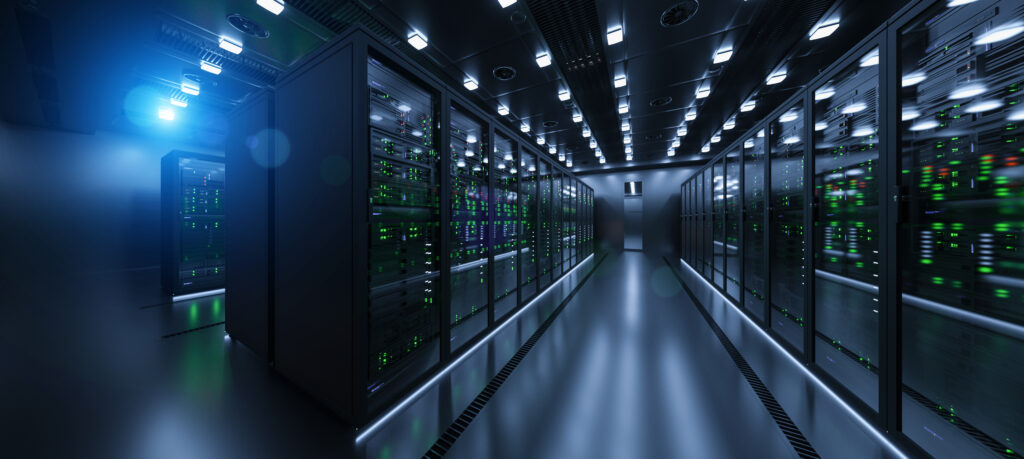As the appetite for cloud services, AI, and big data analytics grows unabated, the expansion of hyperscale data centers to meet this burgeoning demand follows. The proliferation of these gargantuan facilities is designed to support massive data processing needs with optimum efficiency and scalability. Tech behemoths like AWS, Google, and Microsoft are leading the charge, pushing into countries like Malaysia, Indonesia, and India to establish the infrastructure required to deliver their services in these markets. With the meteoric rise of emerging technologies showing no signs of slowing, expect to see hyperscale data centers continue mushrooming across the globe. Their development marks the next phase in the technology revolution that stands to transform business and society.
The Rapid Growth of Hyperscale Data Centres
The demand for cloud services, AI, and big data analytics has fuelled significant growth in hyperscale data centers. Major tech companies are expanding their infrastructure to cater to this growing demand. Hyperscale data centers support massive data processing needs with high efficiency and scalability.
Increased Cloud Adoption
- The adoption of cloud services like AWS, Google Cloud, and Microsoft Azure has increased exponentially. More businesses are migrating their IT infrastructure to the cloud. This has resulted in the construction of new hyperscale data centers by major cloud providers to meet the burgeoning demand. For example, AWS plans to launch data centers in Jakarta and Mumbai to support their cloud customers in these regions.
Growth in AI and Big Data
- Advances in AI, machine learning, and big data analytics have also contributed to the expansion of hyperscale data centers. The computational power required for AI training and big data processing can only be provided by hyperscale data centers. Tech giants are investing heavily in building new data centers to provide infrastructure for their AI and big data offerings. For example, Google is expanding its data center footprint to support AI projects like DeepMind.
Low Cost of Operation
- Hyperscale data centers are efficient in power and cost efficiency. Their massive scale lowers the cost of operation significantly compared to smaller data centers. This has encouraged major tech companies to adopt the hyperscale model for their data center infrastructure. The low cost of operation at hyperscale has also made cloud and other advanced data-driven services more affordable for end users.
In summary, the demand for cloud services, AI, and big data analytics is fueling the rapid growth of hyperscale data centers. Major tech companies are expanding their hyperscale data center infrastructure to cater to this increasing demand in a cost-efficient manner. This growth trend will likely continue as digital transformation accelerates across the globe.
Key Drivers Behind the Expansion of Hyperscale Data Centres

The increasing demand for cloud services is a major driver of hyperscale data center expansion. As more businesses adopt cloud computing and storage solutions, hyperscale providers need to scale their infrastructure to meet capacity requirements. According to Cisco, global cloud traffic will likely grow at a compound annual growth rate of 21% from 2019 to 2023. To keep up with this pace, hyperscale data centers will continue expanding into new regions and markets.
Big Data and Analytics Growth
- The growth of big data and analytics is also fuelling the rise of hyperscale data centers. As companies gather and analyze huge volumes of data to gain business insights, they require data centers with massive computing power and storage capacity. Hyperscale data centers are capable in handling huge amounts of data and performing intensive computing tasks with high efficiency. Their scalable infrastructure can accommodate increasing data and workloads over time.
AI and Edge Computing Emergence
- Emerging technologies like artificial intelligence and edge computing are shaping the evolution of hyperscale data centers. AI systems need powerful servers and lots of data to train machine learning models. Edge data centers also require high-performance infrastructure to support latency-sensitive applications. Hyperscale providers are investing in advanced technologies and more powerful servers to meet the demanding requirements of AI, edge computing, and other emerging workloads.
Hyperscale Data Centres Expansion
- The drive in expansion of hyperscale data centers is due to the need to serve customers in new regions and markets. As tech companies globalize their operations, they require data center infrastructure in strategic locations around the world. Building new hyperscale data centers in Asia, Latin America, the Middle East, and Africa allows providers to offer low-latency cloud services to local customers and comply with data sovereignty laws. It also helps them tap into new sources of growth outside their traditional markets.
In summary, the growth of cloud services, big data, emerging technologies, and global demand are fuelling expansion in the hyperscale data center industry. Hyperscale providers need to continuously scale their infrastructure to keep up with increasing data volumes and workloads as well as reach new customers and markets worldwide. This ongoing need for greater capacity and coverage is driving investments in new hyperscale data centers across the globe.
Major Tech Companies Investing in New Hyperscale Data Centres
To meet the increasing demand for cloud and computing services, major technology companies are rapidly expanding their hyperscale data center infrastructure globally. Amazon Web Services Amazon Web Services (AWS), the cloud computing subsidiary of Amazon, continues to invest heavily in new data centers to support its cloud platform. AWS recently announced plans to open new data centers in Jakarta, Indonesia, and Cape Town, South Africa. These facilities will join AWS’s existing global infrastructure spanning over 20 geographic regions with more than 60 availability zones.
- Google is expanding its data center footprint to keep up with growth in services like Google Cloud, YouTube, and Google Maps. Google recently opened new data centers in Nevada, USA, and Hamina, Finland. The company has also invested $7 billion to build data centers in Pryor, Oklahoma, USA. Once complete, the Pryor data center campus will be one of the largest in the world.
Microsoft
- Microsoft Azure, Microsoft’s cloud computing service, relies on a global network of data centers. Microsoft has announced plans to open new data center regions in Arizona, USA, and Milan, Italy. These new regions will provide scalable cloud services to help companies innovate in industries like automotive, manufacturing, and financial services.
To meet demand, hyperscale data centers are being built on an unprecedented scale. The expansion of cloud infrastructure by companies like AWS, Google, and Microsoft enables the digital services and capabilities that are transforming businesses and societies around the world. However, the energy and environmental impact of these massive data centers has also raised concerns. More efficient and sustainable data center designs will be needed to support continued growth in an environmentally responsible way.
Locations for New Hyperscale Data Centres in APAC
Singapore
- Singapore is a prime location for hyperscale data centers in APAC. This is due to its robust infrastructure, political stability, and business-friendly policies. The Singapore government actively attracts major tech companies by providing tax incentives and funding for data center projects. For example, the government’s Economic Development Board provided support for Google’s $850 million data center investment in Singapore. The country’s advanced fiber optic network, availability of renewable energy, and strategic location makes it an ideal data center hub.
India
- India’s large population and growing digital economy present opportunities for hyperscale data center expansion. Major cities like Mumbai, Chennai, and Hyderabad emerged as data center hubs, with over 100 facilities. The Indian government aims to grow the industry to $4.5 billion by 2025 through policy reforms and infrastructure development. However, challenges like limited land availability, power shortages, and bureaucratic red tape may impact hyperscale data center growth in India.
Indonesia
- Indonesia is also included in this mission of expansion of hyperscale data centers. With a population of over 260 million, they also showcase a fast-growing digital economy. These hyperscale providers namely, Google, is investing $350 million to build a data center in Jakarta. On the other hand, Alibaba Cloud opened a second facility in the country in 2021. However, Indonesia’s data center industry is still relatively nascent. The industry faces challenges such as lacking in infrastructure, cybersecurity risks, and a shortage of technical skills. More government support, private investment in connectivity, renewable energy, and talent development are necessary to realize Indonesia as a key hub for hyperscale data centers in APAC.
In summary, Singapore, India, and Indonesia present significant opportunities and challenges for hyperscale data center expansion in APAC. With strong digital economies and policy support, these locations are poised to become strategic hubs for hyperscale providers in the region. However, issues like infrastructure gaps, security risks, and skill shortages must be addressed to sustain long-term growth. By partnering with local governments and investing in data center ecosystems, hyperscale companies can overcome obstacles and tap into the full potential of these high-growth markets.
Design and Infrastructure of Modern Hyperscale Data Centres
Power Infrastructure
- The power infrastructure of hyperscale data centers is designed to handle immense energy demands. They typically have redundant power supply from multiple substations and backup generators to ensure continuous uptime. The power distribution system distributes electricity to support critical infrastructure and computing equipment. Uninterruptible power supply (UPS) systems provide emergency power in the event of an outage until backup generators start operating.
Cooling Systems
- Hyperscale data centers generate substantial heat from high-density computing equipment. They employ specialized cooling systems like evaporative cooling towers, chillers, and air handling units to dissipate heat and maintain optimal temperatures. The cooling infrastructure is designed with redundancy and energy efficiency in mind. Variable-speed fans and pumps are used to reduce power consumption. Free cooling systems that utilize external air and water temperatures are also commonly used when conditions permit.
Network Connectivity
- Hyperscale data centers have high-speed network connectivity to support massive data traffic. They are typically connected to multiple internet service providers and telecommunication companies to ensure redundancy. High-bandwidth fiber optic lines and cutting-edge networking equipment provide ultra-fast data transfer speeds. Software-defined networking is also used to dynamically configure network infrastructure.
The expansive infrastructure of modern hyperscale data centers powers the digital services we have come to rely on. Advancements in power, cooling, and networking technologies have enabled data centers to become more efficient, scalable, and resilient. As demands for digital services continue to rise, hyperscale data centers will evolve to support emerging technologies like AI, 5G, and edge computing.
To Conclude,
With the continued expansion of hyperscale data centers around the world, you have the opportunity to leverage these capabilities for your organization’s digital transformation. By adopting cloud, AI, and big data solutions hosted in these state-of-the-art facilities, you can rapidly innovate while reducing costs and environmental impact. However, you must carefully evaluate providers, locations, and service levels to ensure the solutions meet your specific needs. This growth presents immense possibilities if you stay abreast of the latest developments and choose the right partners. The hyperscale era is here to accelerate your success if you embrace it strategically.
More Stories
Kakao Plans Advanced AI-Ready Data Center in Gyeonggi to Boost Service Resilience
The company will build an advanced AI-ready data center in Namyangju, Gyeonggi Province. Notably, this ambitious project is set for completion by 2028. It responds to key lessons from the October 2022 service disruption.
Quark’s Deep Search: Alibaba’s AI App Redefines China’s Search Landscape
Alibaba’s Quark AI app is making waves with its groundbreaking “deep search” feature. By harnessing the power of its Qwen AI models, Quark elevates traditional search functions, offering users precise, context-rich answers to intricate questions.
Qwen3: Alibaba’s Open-Source AI Breakthrough Redefining Global Innovation
Alibaba’s Qwen3 emerges as a groundbreaking force, poised to redefine the paradigms of global innovation. As you delve into this open-source marvel, you will discover how Qwen3 is not just another AI model but a sophisticated suite of eight advanced architectures, including the revolutionary Mixture-of-Experts (MoE).
SAP’s Cloud Crusade: Leadership Anchored as ERP Transformation Accelerates
SAP has extended CEO Christian Klein’s contract until April 2030 and CFO Dominik Asam’s until March 2028. This decision highlights the company’s commitment to cloud transformation.
Gamuda Powers Malaysia’s Digital Leap with Google’s Data Center Deal
Google has awarded Gamuda Berhad a significant contract to develop a hyperscale data center in Malaysia. This collaboration highlights Google’s investment strategy to strengthen cloud infrastructure and AI capabilities in Southeast Asia.
Agent Hospital: China’s AI Doctors Redefine Global Healthcare Frontiers
China’s “Agent Hospital” emerges as a revolutionary force in healthcare. Developed by Tsinghua University, this groundbreaking facility boasts the world’s first fleet of fully AI-driven medical professionals.


